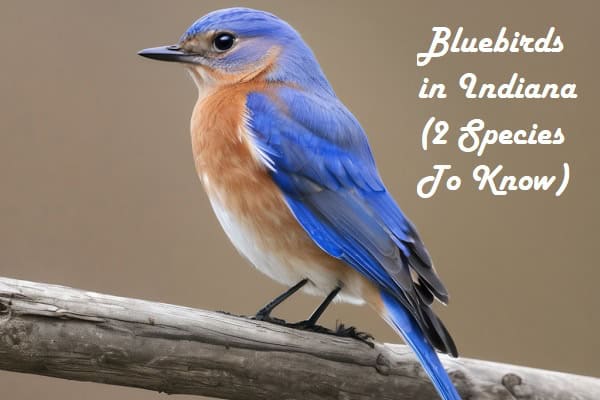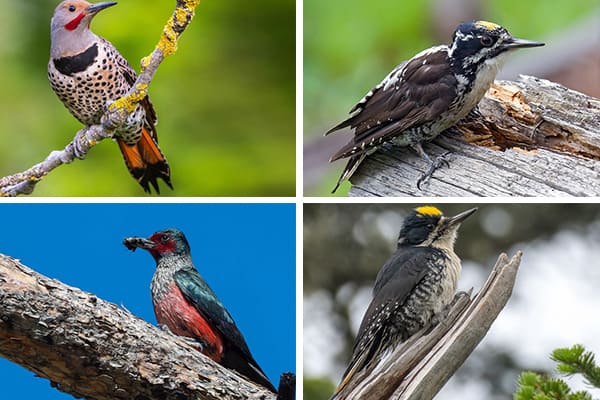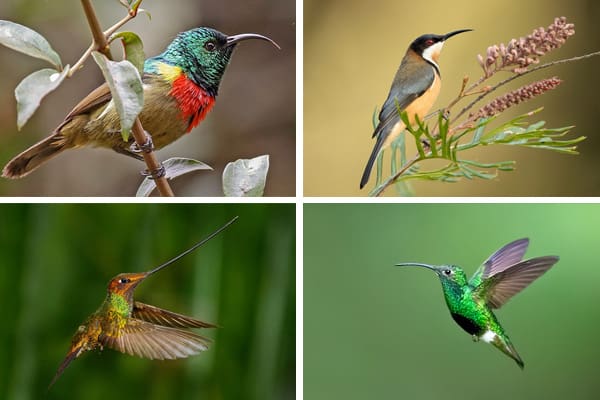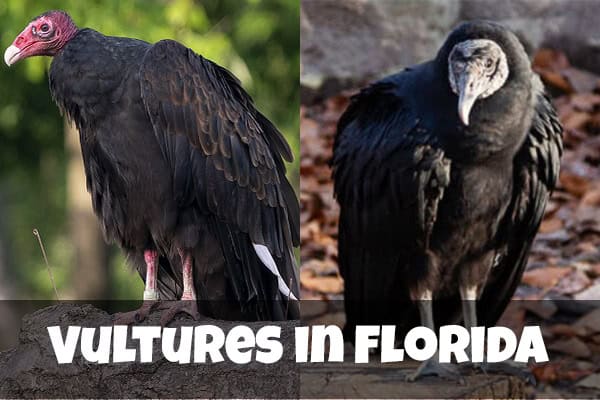Bluebirds in Indiana (2 Beautiful Species To Know)
Have you ever seen Bluebirds of Indiana? Those bluebirds always brighten my day when I take my walks through the fields near my home. Such vibrant little things, with their sky-blue feathers and cheerful songs, lift my spirits. I’ve watched them for decades now, raising little families in the birdhouses I’ve put up, and I must say it does my old heart good. They’re more than just a pretty sight too – I’ve learned they play important roles in keeping pesky insects under control. There are two main kinds you’ll spot here in Indiana, what the book-learning folks call eastern and mountain bluebirds. Reckon I’ve seen them both flitting about over the years. Always makes me smile.
1. Eastern Bluebird (Sialia sialis)
- Size: 6.5-8.5 inches (16-21.5 cm)
- Weight: 1-2.5 ounces (28-71 grams)
- Lifespan: 6-10 years in the wild
- Diet: Insects, berries, and fruits
The Eastern Bluebird is perhaps the most recognized bluebird species in Indiana. With its bright blue upperparts and rusty-orange throat and breast, this bird is a true gem of the fields and gardens. The male Eastern Bluebird is particularly vibrant during the breeding season, making it easy to spot against the green backdrop of fields and meadows.

Eastern Bluebirds are cavity-nesting birds, often found in open areas like farmlands, orchards, and around human settlements. They prefer habitats with scattered trees or fence posts, where they can perch and scan for food. Their diet mainly consists of insects, such as beetles and grasshoppers, as well as fruits and berries during the fall and winter months.
One of the most charming aspects of the Eastern Bluebird is its melodious song, which consists of a series of soft, whistled notes. These birds are social and often seen in small groups outside of the breeding season. Their presence is a sign of spring, as they migrate back to Indiana from their wintering grounds in the southern United States and Mexico.
2. Mountain Bluebird (Sialia currucoides)
- Size: 6.5-8.5 inches (16-21.5 cm)
- Weight: 1-2.5 ounces (28-71 grams)
- Lifespan: 6-10 years in the wild
- Diet: Insects, fruits, and berries
The Mountain Bluebird is another stunning species that can sometimes be spotted in Indiana, particularly during migration. This bird is known for its brilliant sky-blue plumage and is slightly paler than the Eastern Bluebird. Mountain Bluebirds prefer more open, mountainous habitats, but during migration, they can wander into other areas, including Indiana.

These birds are often found in grasslands, open fields, and along roadsides. They are usually seen perched on low shrubs or fence posts, watching for insects to catch on the ground. Their diet primarily consists of insects during the breeding season, but they also enjoy fruits and berries in the fall.
Mountain Bluebirds are known for their gentle and soft calls, which can sometimes be heard as they interact with each other. Unlike the Eastern Bluebirds, they tend to be less social and may be seen alone or in pairs. Their migration patterns lead them to travel long distances, making them a delightful surprise for birdwatchers in Indiana.
Where You Can Find These Birds?
If you’re eager to spot bluebirds in Indiana, there are several prime locations to visit:
- State Parks: Many state parks in Indiana provide the perfect habitat for bluebirds. Parks like Brown County State Park and Turkey Run State Park feature open fields and scattered trees, ideal for Eastern Bluebirds.
- Conservation Areas: Many conservation areas and wildlife refuges are designed to protect habitats for various bird species. The Goose Pond Fish and Wildlife Area is a great place to look for both Eastern and Mountain Bluebirds.
- Farmlands and Open Fields: Bluebirds thrive in agricultural areas where there are open spaces and scattered trees. Drive through rural areas in Indiana, especially during spring and summer, to spot these beautiful birds.
- Gardens and Backyards: Creating a bluebird-friendly garden can attract these birds to your backyard. Installing bluebird houses and planting native plants that produce berries can encourage them to visit.
- Wetlands and Riparian Zones: Bluebirds are often found near water sources, such as ponds and streams. Check out local wetlands and riparian zones, where you might see Eastern Bluebirds perched on nearby branches.
Conclusion
Bluebirds are a treasured part of Indiana’s avian landscape, bringing beauty and joy to those who spot them. The Eastern Bluebird and Mountain Bluebird each have unique qualities that make them special. Whether you are hiking in a state park, driving through rural farmland, or enjoying your backyard, keep an eye out for these charming birds. Their bright colors and sweet songs are sure to brighten your day and connect you with the wonders of nature.
Read More 🦅 Related Articles~
- Sparrows in Indiana
- Woodpeckers of Indiana
- Small Birds With Long Necks
- Woodpeckers in Michigan
- Types Of Sparrows in Ohio
Thanks for reading…💕







